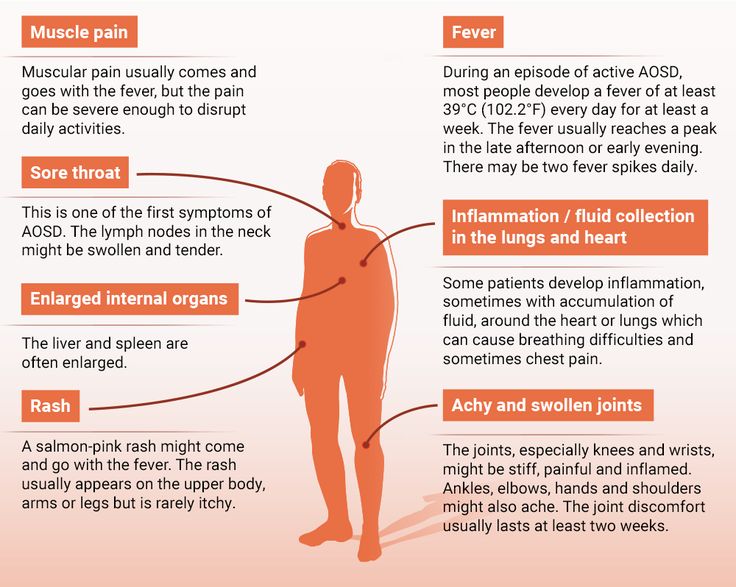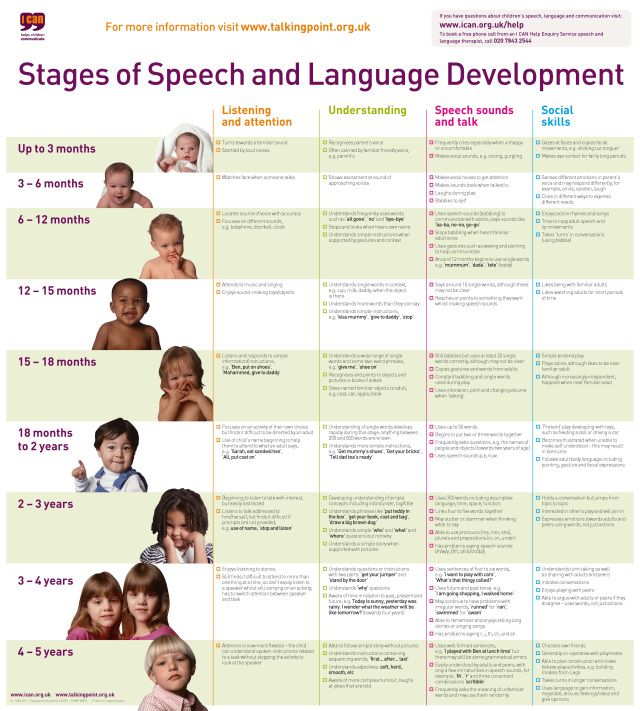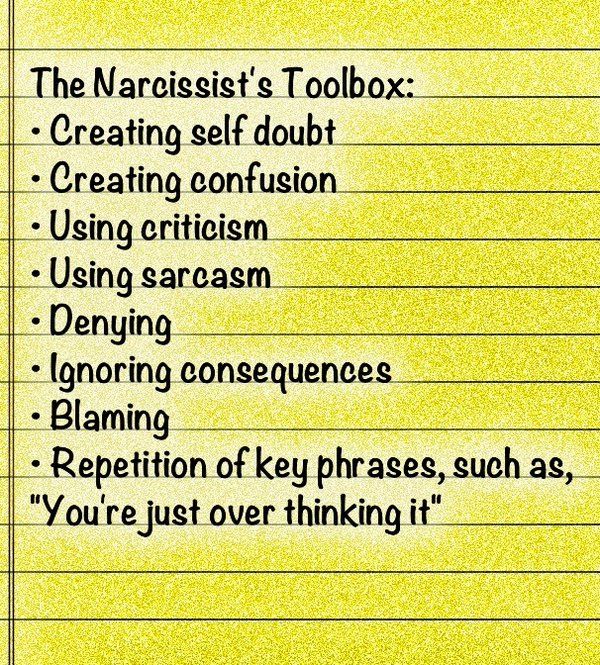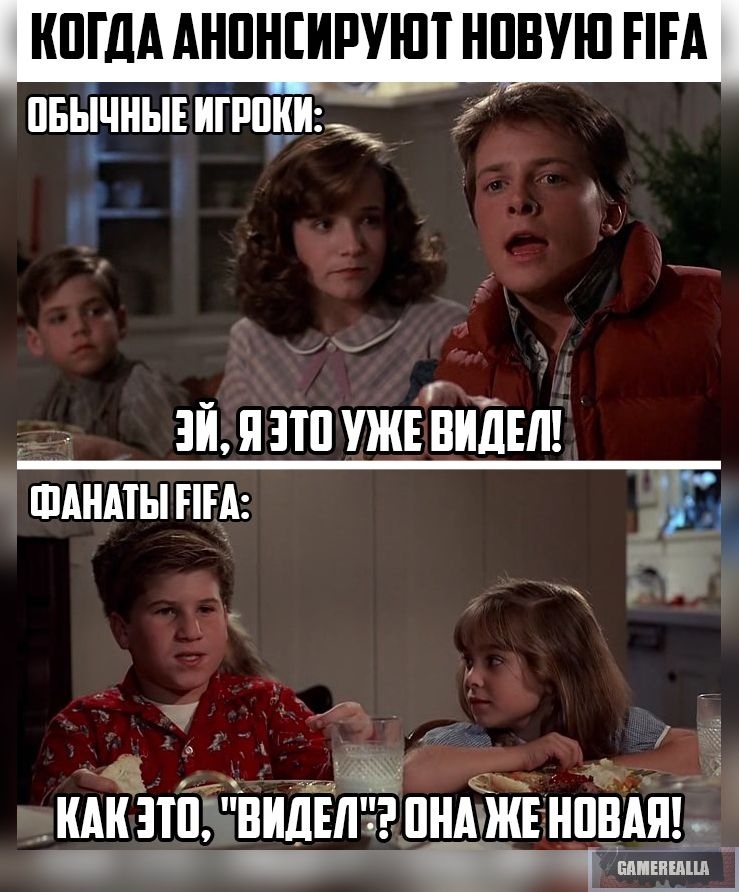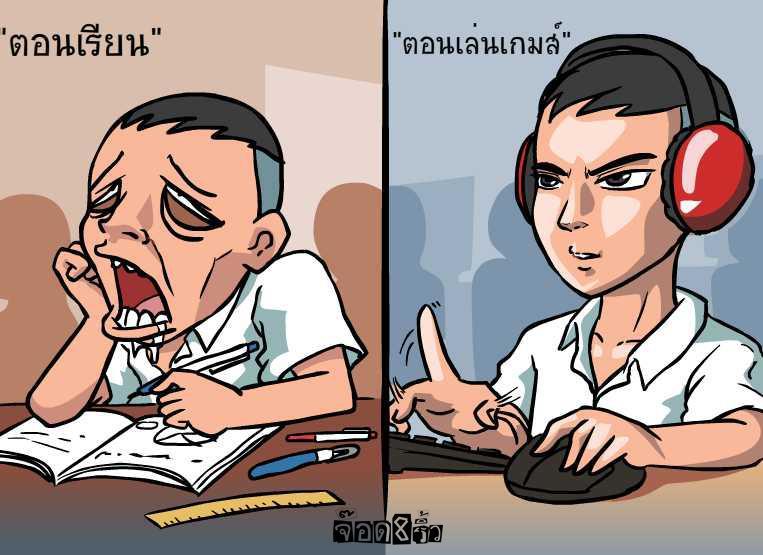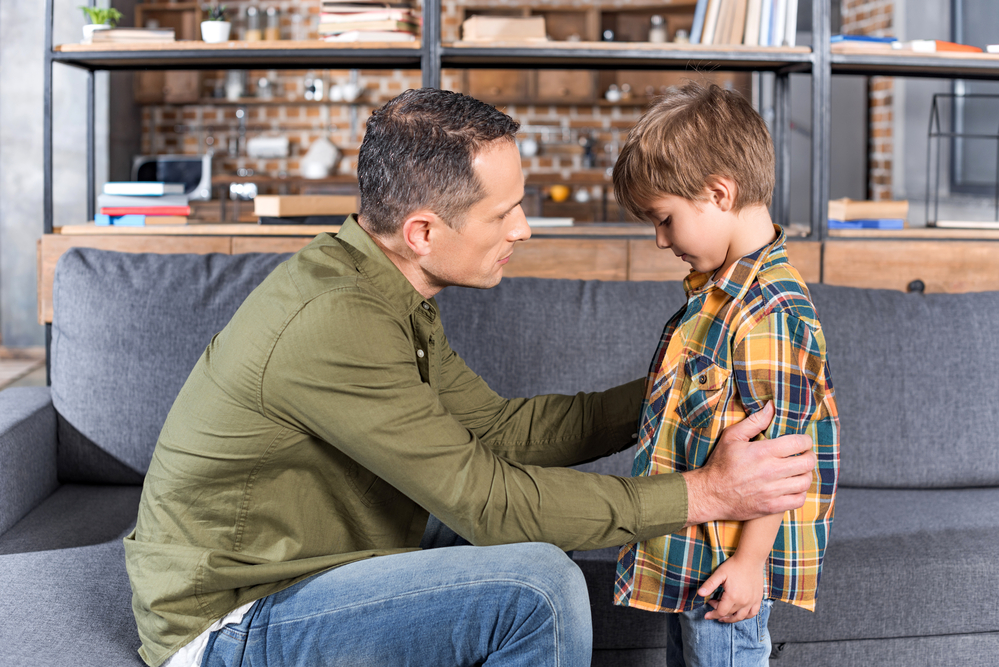What to do after an anxiety attack
What To Do After a Panic Attack... And feel better again
You already know a panic attack can make your life significantly difficult. But what exactly is the definition? A panic attack is described as an episode of intense fear which can be triggered by severe stress, for example, a major life change such as the death of a loved one or a traumatic experience such as sexual assault. What makes Panic Attacks different from an episode of high-anxiety is that during a Panic attack you’ll experience an intense fear, for example of dying, losing control or collapsing, which is not normally experience during heightened anxiety episodes. This and other symptoms are the focus of Panic Attack Treatment.
What Are The Symptoms Of a Panic Attack?
Panic attacks come with frightening symptoms:
- Shortness of breath or hyperventilating
- Fastened heartbeat
- Feeling ill and lightheaded
- Feeling out of control or like you’re about to die (distinctive sign of a panic attack!)
- Tingling sensation in your fingers or lips
- Shaking and sweating
- Chest pain
Symptoms vary from person to person but most people experience a mix of them. Since these symptoms are similar to those of a heart attack, it’s not uncommon to confuse one condition for the other. The difference is that a heart attack commonly occurs during physical exertion and worsens over time, while a panic attack can occur suddenly and resolves within 20 minutes.
What Does A Panic Attack Do To Your Body?
During An Attack
Panic attacks might make you feel crazy and out of control. You might even believe you’re about to die. Do you ever wonder what’s happening in your body while you’re dealing with these unpleasant symptoms? Educating yourself on the nature of panic attacks is the first step to learning how to manage them.
The response starts in the amygdala which is the brain’s area responsible for perceiving a threat. Once the danger has been recognised, the amygdala communicates with the hypothalamus that controls the autonomic nervous system. The fight-or-flight response becomes activated, and your body releases hormones called adrenaline and noradrenaline that are designed to cope with a threat. This is when the symptoms start; your muscles tense and your palms sweat. Your heartbeat gets faster and blood pressure increases which provides your muscles with more oxygen.
This is when the symptoms start; your muscles tense and your palms sweat. Your heartbeat gets faster and blood pressure increases which provides your muscles with more oxygen.
The problem is that your mind will react with more and more anxiety upon detecting this internal activation: this is the vicious cycle that causes the escalation of emotional, psychological and physical symptoms that makes panic attacks so scary!
After an Attack
The symptoms of a panic attack tend to peak and then slowly fade away. However, even when the most severe symptoms have gone away, you might still experience muscle tension, anxiety and exhaustion. If you experience panic attacks regularly, it might mean you’re dealing with panic disorder that can have several long-term effects on your body:
- Weakened immune system
- Chronic muscle tension
- Headaches
What Can You Do To Manage A Panic Attack?
1) Try to focus on your breathing
Focus on breathing slowly through your nose and breathing out through your mouth. Try to take deeper breaths and breathe using your stomach.
Try to take deeper breaths and breathe using your stomach.
2) Tell yourself it will pass
Acknowledge the panic attack instead of trying to distract yourself. Remember that it’s not a life-threatening reaction and it will pass eventually.
3) Reach out to someone close
If you realise you’re having a panic attack, reach out to a friend or family member, even if they’re not present, and tell them what’s going on with you. Try to reassure them that you’re aware you’re only having a panic attack and you simply want someone to be with you during this experience.
How To Calm Down After A Panic Attack?
1) Focus on your surroundings
A panic attack can be a surrealistic experience that leaves you feeling like you’re about to die. Once the worst is over, try to bring yourself back to the present using a grounding technique, such as by observing and naming the objects around you. Remind yourself where you are, with whom, what you were doing and what you’ll do next.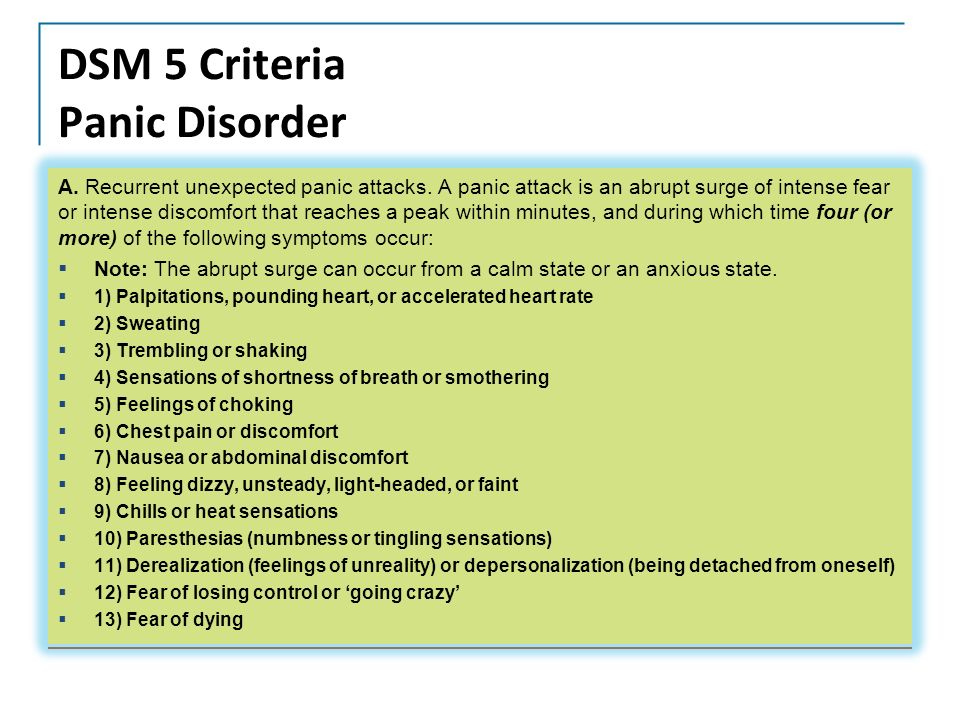
2) Reach out to a loved one
Talking to someone who can offer support will put you at ease and help you distract yourself from negative feelings.
3) Visualise yourself in a safe space
A panic attack might make you feel uneasy so it’s important that you imagine yourself somewhere safe. You could also recall a happy memory.
Share this Image On Your Site
</p><br /><br /><br /><br /><br /><br /><br /><br /><br /><br /><br /><br /><br /><br /><br /><br /><br /><br /><br /><br /><br /><br /><br /><br /><br /><br /><br /><br /><br /><br /><br /><br /><br /><br /><br /><br /><br /><br /><br /><br /><br /><br /><br /><br /><br /><br /><br /><br /><br /><br /><br /><br /><br /><br /><br /><br /><br /><br /><br /><br /><br /><br /><br /><br /><br /><br /><br /><br /><br /><br /><br /><br /><br /><br /><br /><br /><br /><br /><br /><br /><br /><br /><br /><br /><br /><br /><br /><br /><br /><br /><br /><br /><br /><br /><br /><br /><br /><br /><br /><br /><br /><br /><br /><br /><br /><br /><br /><br /><br /><br /><br /><br /><br /><br /><br /><br /><br /><br /><br /><br /><br /><br /><br /><br /><br /><br /><br /><br /><br /><br /><br /><br /><br /><br /><br /><br /><br /><br /><br /><br /><br /><br /><br /><br /><br /><br /><br /><br /><br /><br /><br /><br /><br /><br /><br /><br /><br /><br /><br /><br /><br /><br /><br /><br /><br /><br /><br /><p><strong>Please include attribution to https://therapy-central. com with this graphic.</strong></p><br /><br /><br /><br /><br /><br /><br /><br /><br /><br /><br /><br /><br /><br /><br /><br /><br /><br /><br /><br /><br /><br /><br /><br /><br /><br /><br /><br /><br /><br /><br /><br /><br /><br /><br /><br /><br /><br /><br /><br /><br /><br /><br /><br /><br /><br /><br /><br /><br /><br /><br /><br /><br /><br /><br /><br /><br /><br /><br /><br /><br /><br /><br /><br /><br /><br /><br /><br /><br /><br /><br /><br /><br /><br /><br /><br /><br /><br /><br /><br /><br /><br /><br /><br /><br /><br /><br /><br /><br /><br /><br /><br /><br /><br /><br /><br /><br /><br /><br /><br /><br /><br /><br /><br /><br /><br /><br /><br /><br /><br /><br /><br /><br /><br /><br /><br /><br /><br /><br /><br /><br /><br /><br /><br /><br /><br /><br /><br /><br /><br /><br /><br /><br /><br /><br /><br /><br /><br /><br /><br /><br /><br /><br /><br /><br /><br /><br /><br /><br /><br /><br /><br /><br /><br /><br /><br /><br /><br /><br /><br /><br /><br /><br /><br /><br /><br /><br /><p><a href=’ https://therapy-central.
com with this graphic.</strong></p><br /><br /><br /><br /><br /><br /><br /><br /><br /><br /><br /><br /><br /><br /><br /><br /><br /><br /><br /><br /><br /><br /><br /><br /><br /><br /><br /><br /><br /><br /><br /><br /><br /><br /><br /><br /><br /><br /><br /><br /><br /><br /><br /><br /><br /><br /><br /><br /><br /><br /><br /><br /><br /><br /><br /><br /><br /><br /><br /><br /><br /><br /><br /><br /><br /><br /><br /><br /><br /><br /><br /><br /><br /><br /><br /><br /><br /><br /><br /><br /><br /><br /><br /><br /><br /><br /><br /><br /><br /><br /><br /><br /><br /><br /><br /><br /><br /><br /><br /><br /><br /><br /><br /><br /><br /><br /><br /><br /><br /><br /><br /><br /><br /><br /><br /><br /><br /><br /><br /><br /><br /><br /><br /><br /><br /><br /><br /><br /><br /><br /><br /><br /><br /><br /><br /><br /><br /><br /><br /><br /><br /><br /><br /><br /><br /><br /><br /><br /><br /><br /><br /><br /><br /><br /><br /><br /><br /><br /><br /><br /><br /><br /><br /><br /><br /><br /><br /><p><a href=’ https://therapy-central.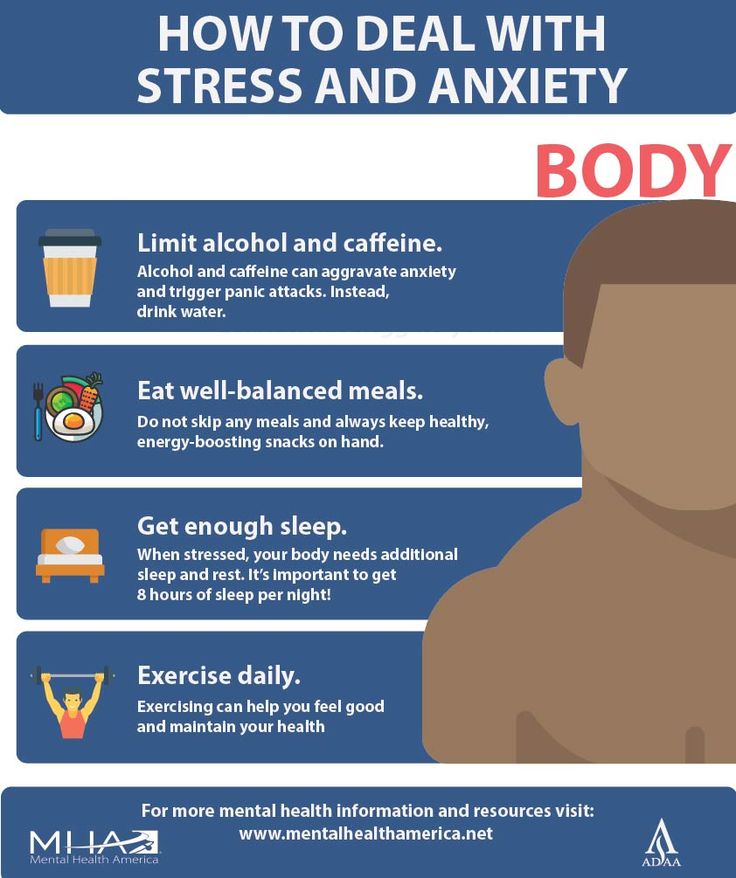 com/2021/10/11/what-to-do-after-a-panic-attack/<span data-mce-type=”bookmark” style=”display: inline-block; width: 0px; overflow: hidden; line-height: 0;” class=”mce_SELRES_start”></span><br /><br /><br /><br /><br /><br /><br /><br /><br /><br /><br /><br /><br /><br /><br /><br /><br /><br /><br /><br /><br /><br /><br /><br /><br /><br /><br /><br /><br /><br /><br /><br /><br /><br /><br /><br /><br /><br /><br /><br /><br /><br /><br /><br /><br /><br /><br /><br /><br /><br /><br /><br /><br /><br /><br /><br /><br /><br /><br /><br /><br /><br /><br /><br /><br /><br /><br /><br /><br /><br /><br /><br /><br /><br /><br /><br /><br /><br /><br /><br /><br /><br /><br />’><img src=’https://therapy-central.
com/2021/10/11/what-to-do-after-a-panic-attack/<span data-mce-type=”bookmark” style=”display: inline-block; width: 0px; overflow: hidden; line-height: 0;” class=”mce_SELRES_start”></span><br /><br /><br /><br /><br /><br /><br /><br /><br /><br /><br /><br /><br /><br /><br /><br /><br /><br /><br /><br /><br /><br /><br /><br /><br /><br /><br /><br /><br /><br /><br /><br /><br /><br /><br /><br /><br /><br /><br /><br /><br /><br /><br /><br /><br /><br /><br /><br /><br /><br /><br /><br /><br /><br /><br /><br /><br /><br /><br /><br /><br /><br /><br /><br /><br /><br /><br /><br /><br /><br /><br /><br /><br /><br /><br /><br /><br /><br /><br /><br /><br /><br /><br />’><img src=’https://therapy-central. com/wp-content/uploads/2021/10/infoghraphic-What-To-Do-After-Panic-Attack.png<span data-mce-type=”bookmark” style=”display: inline-block; width: 0px; overflow: hidden; line-height: 0;” class=”mce_SELRES_start”></span><span data-mce-type=”bookmark” style=”display: inline-block; width: 0px; overflow: hidden; line-height: 0;” class=”mce_SELRES_start”></span><span data-mce-type=”bookmark” style=”display: inline-block; width: 0px; overflow: hidden; line-height: 0;” class=”mce_SELRES_start”></span><span data-mce-type=”bookmark” style=”display: inline-block; width: 0px; overflow: hidden; line-height: 0;” class=”mce_SELRES_start”></span><span data-mce-type=”bookmark” style=”display: inline-block; width: 0px; overflow: hidden; line-height: 0;” class=”mce_SELRES_start”></span>’ alt=” 540px border=’0′ /></a></p><br /><br /><br /><br /><br /><br /><br /><br /><br /><br /><br /><br /><br /><br /><br /><br /><br /><br /><br /><br /><br /><br /><br /><br /><br /><br /><br /><br /><br /><br /><br /><br /><br /><br /><br /><br /><br /><br /><br /><br /><br /><br /><br /><br /><br /><br /><br /><br /><br /><br /><br /><br /><br /><br /><br /><br /><br /><br /><br /><br /><br /><br /><br /><br /><br /><br /><br /><br /><br /><br /><br /><br /><br /><br /><br /><br /><br /><br /><br /><br /><br /><br /><br /><br /><br /><br /><br /><br /><br /><br /><br /><br /><br /><br /><br /><br /><br /><br /><br /><br /><br /><br /><br /><br /><br /><br /><br /><br /><br /><br /><br /><br /><br /><br /><br /><br /><br /><br /><br /><br /><br /><br /><br /><br /><br /><br /><br /><br /><br /><br /><br /><br /><br /><br /><br /><br /><br /><br /><br /><br /><br /><br /><br /><br /><br /><br /><br /><br /><br /><br /><br /><br /><br /><br /><br /><br /><br /><br /><br /><br /><br /><br /><br /><br /><br /><br /><br /><p>
com/wp-content/uploads/2021/10/infoghraphic-What-To-Do-After-Panic-Attack.png<span data-mce-type=”bookmark” style=”display: inline-block; width: 0px; overflow: hidden; line-height: 0;” class=”mce_SELRES_start”></span><span data-mce-type=”bookmark” style=”display: inline-block; width: 0px; overflow: hidden; line-height: 0;” class=”mce_SELRES_start”></span><span data-mce-type=”bookmark” style=”display: inline-block; width: 0px; overflow: hidden; line-height: 0;” class=”mce_SELRES_start”></span><span data-mce-type=”bookmark” style=”display: inline-block; width: 0px; overflow: hidden; line-height: 0;” class=”mce_SELRES_start”></span><span data-mce-type=”bookmark” style=”display: inline-block; width: 0px; overflow: hidden; line-height: 0;” class=”mce_SELRES_start”></span>’ alt=” 540px border=’0′ /></a></p><br /><br /><br /><br /><br /><br /><br /><br /><br /><br /><br /><br /><br /><br /><br /><br /><br /><br /><br /><br /><br /><br /><br /><br /><br /><br /><br /><br /><br /><br /><br /><br /><br /><br /><br /><br /><br /><br /><br /><br /><br /><br /><br /><br /><br /><br /><br /><br /><br /><br /><br /><br /><br /><br /><br /><br /><br /><br /><br /><br /><br /><br /><br /><br /><br /><br /><br /><br /><br /><br /><br /><br /><br /><br /><br /><br /><br /><br /><br /><br /><br /><br /><br /><br /><br /><br /><br /><br /><br /><br /><br /><br /><br /><br /><br /><br /><br /><br /><br /><br /><br /><br /><br /><br /><br /><br /><br /><br /><br /><br /><br /><br /><br /><br /><br /><br /><br /><br /><br /><br /><br /><br /><br /><br /><br /><br /><br /><br /><br /><br /><br /><br /><br /><br /><br /><br /><br /><br /><br /><br /><br /><br /><br /><br /><br /><br /><br /><br /><br /><br /><br /><br /><br /><br /><br /><br /><br /><br /><br /><br /><br /><br /><br /><br /><br /><br /><br /><p>
How To Prevent A Panic Attack?
1) Guided meditation
Meditation aims to clear your mind and relieve anxiety. Find one that helps you relax and try to listen to it regularly.
Find one that helps you relax and try to listen to it regularly.
2) Regular exercises
Regular exercise can do wonders for your mental health. It doesn’t only boost your mood and reduce stress but improves sleep quality too. Tthat’s essential to keep anxiety at bay.
3) Improve your diet
Avoid food and beverages that can cause anxiety such as caffeine. Try to eat healthy meals with lots of fruits and vegetables.
4) Practise positive affirmations
Positive affirmations are statements that can help you overcome negative thoughts. You could start from something simple like; ‘’I’m going to be okay.”
5) Get Treatment for Panic Attacks working with a trained Therapist
If you notice panic attacks returning, it might be a sign of Panic Disoder. Even if you’ve had just a few episodes, working with a clinician will allow you to explore the reasons behind your attacks as well as learning the strategies to reduce the frequency and intensity of panic attacks.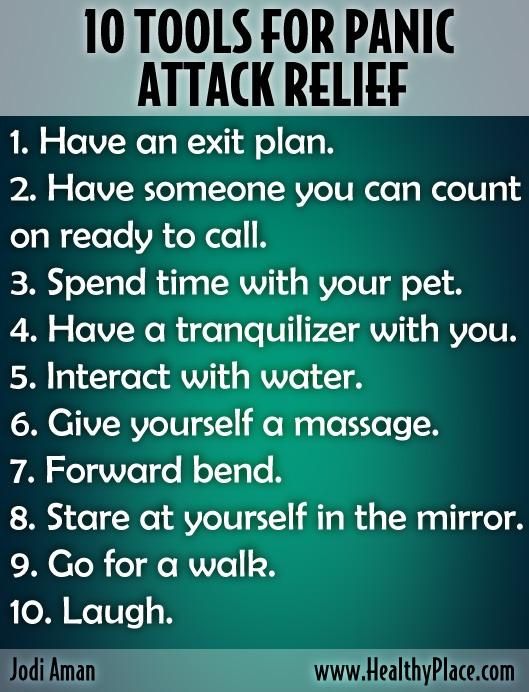
Share this Image On Your Site
</p><br /><br /><br /><br /><br /><br /><br /><br /><br /><br /><br /><br /><br /><br /><br /><br /><br /><br /><br /><br /><br /><br /><br /><br /><br /><br /><br /><br /><br /><br /><br /><br /><br /><br /><br /><br /><br /><br /><br /><br /><br /><br /><br /><br /><br /><br /><br /><br /><br /><br /><br /><br /><br /><br /><br /><br /><br /><br /><br /><br /><br /><br /><br /><br /><br /><br /><br /><br /><br /><br /><br /><br /><br /><br /><br /><br /><br /><br /><br /><br /><br /><br /><br /><br /><br /><br /><br /><br /><br /><br /><br /><br /><br /><br /><br /><br /><br /><br /><br /><br /><br /><br /><br /><br /><br /><br /><br /><br /><br /><br /><br /><br /><br /><br /><br /><br /><br /><br /><br /><br /><br /><br /><br /><br /><br /><br /><br /><br /><br /><br /><br /><br /><br /><br /><br /><br /><br /><br /><br /><br /><br /><br /><br /><br /><br /><br /><br /><br /><br /><br /><br /><br /><br /><br /><br /><br /><br /><br /><br /><br /><br /><br /><br /><br /><br /><br /><br /><p><strong>Please include attribution to https://therapy-central.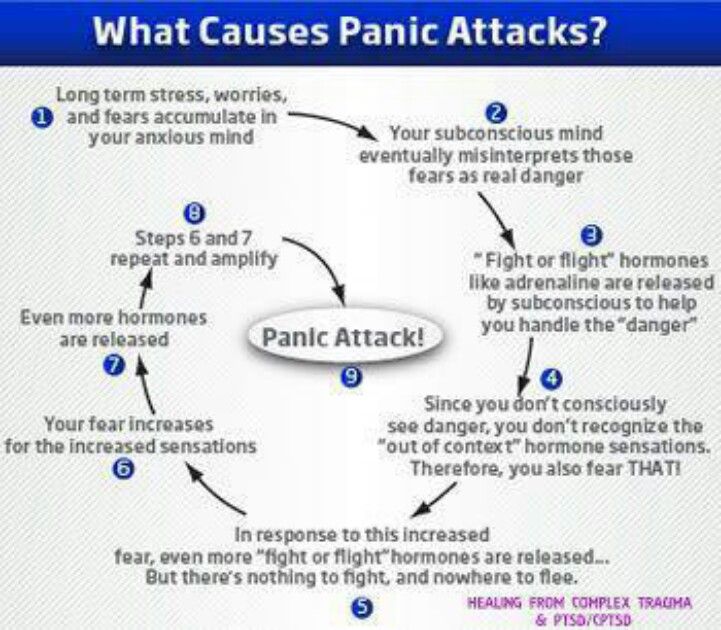 com with this graphic.</strong></p><br /><br /><br /><br /><br /><br /><br /><br /><br /><br /><br /><br /><br /><br /><br /><br /><br /><br /><br /><br /><br /><br /><br /><br /><br /><br /><br /><br /><br /><br /><br /><br /><br /><br /><br /><br /><br /><br /><br /><br /><br /><br /><br /><br /><br /><br /><br /><br /><br /><br /><br /><br /><br /><br /><br /><br /><br /><br /><br /><br /><br /><br /><br /><br /><br /><br /><br /><br /><br /><br /><br /><br /><br /><br /><br /><br /><br /><br /><br /><br /><br /><br /><br /><br /><br /><br /><br /><br /><br /><br /><br /><br /><br /><br /><br /><br /><br /><br /><br /><br /><br /><br /><br /><br /><br /><br /><br /><br /><br /><br /><br /><br /><br /><br /><br /><br /><br /><br /><br /><br /><br /><br /><br /><br /><br /><br /><br /><br /><br /><br /><br /><br /><br /><br /><br /><br /><br /><br /><br /><br /><br /><br /><br /><br /><br /><br /><br /><br /><br /><br /><br /><br /><br /><br /><br /><br /><br /><br /><br /><br /><br /><br /><br /><br /><br /><br /><br /><p><a href=’ https://therapy-central.
com with this graphic.</strong></p><br /><br /><br /><br /><br /><br /><br /><br /><br /><br /><br /><br /><br /><br /><br /><br /><br /><br /><br /><br /><br /><br /><br /><br /><br /><br /><br /><br /><br /><br /><br /><br /><br /><br /><br /><br /><br /><br /><br /><br /><br /><br /><br /><br /><br /><br /><br /><br /><br /><br /><br /><br /><br /><br /><br /><br /><br /><br /><br /><br /><br /><br /><br /><br /><br /><br /><br /><br /><br /><br /><br /><br /><br /><br /><br /><br /><br /><br /><br /><br /><br /><br /><br /><br /><br /><br /><br /><br /><br /><br /><br /><br /><br /><br /><br /><br /><br /><br /><br /><br /><br /><br /><br /><br /><br /><br /><br /><br /><br /><br /><br /><br /><br /><br /><br /><br /><br /><br /><br /><br /><br /><br /><br /><br /><br /><br /><br /><br /><br /><br /><br /><br /><br /><br /><br /><br /><br /><br /><br /><br /><br /><br /><br /><br /><br /><br /><br /><br /><br /><br /><br /><br /><br /><br /><br /><br /><br /><br /><br /><br /><br /><br /><br /><br /><br /><br /><br /><p><a href=’ https://therapy-central.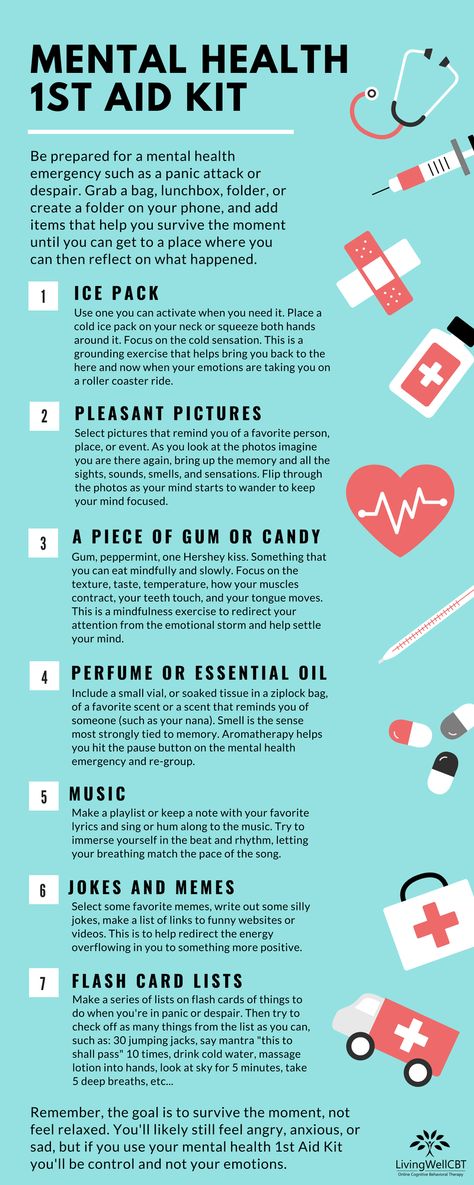 com/2021/10/11/what-to-do-after-a-panic-attack/<span data-mce-type=”bookmark” style=”display: inline-block; width: 0px; overflow: hidden; line-height: 0;” class=”mce_SELRES_start”></span><br /><br /><br /><br /><br /><br /><br /><br /><br /><br /><br /><br /><br /><br /><br /><br /><br /><br /><br /><br /><br /><br /><br /><br /><br /><br /><br /><br /><br /><br /><br /><br /><br /><br /><br /><br /><br /><br /><br /><br /><br /><br /><br /><br /><br /><br /><br /><br /><br /><br /><br /><br /><br /><br /><br /><br /><br /><br /><br /><br /><br /><br /><br /><br /><br /><br /><br /><br /><br /><br /><br /><br /><br /><br /><br /><br /><br /><br /><br /><br /><br /><br /><br />’><img src=’https://therapy-central.
com/2021/10/11/what-to-do-after-a-panic-attack/<span data-mce-type=”bookmark” style=”display: inline-block; width: 0px; overflow: hidden; line-height: 0;” class=”mce_SELRES_start”></span><br /><br /><br /><br /><br /><br /><br /><br /><br /><br /><br /><br /><br /><br /><br /><br /><br /><br /><br /><br /><br /><br /><br /><br /><br /><br /><br /><br /><br /><br /><br /><br /><br /><br /><br /><br /><br /><br /><br /><br /><br /><br /><br /><br /><br /><br /><br /><br /><br /><br /><br /><br /><br /><br /><br /><br /><br /><br /><br /><br /><br /><br /><br /><br /><br /><br /><br /><br /><br /><br /><br /><br /><br /><br /><br /><br /><br /><br /><br /><br /><br /><br /><br />’><img src=’https://therapy-central. com/wp-content/uploads/2021/10/infoghraphic-What-To-Do-After-Panic-Attack-2.png<span data-mce-type=”bookmark” style=”display: inline-block; width: 0px; overflow: hidden; line-height: 0;” class=”mce_SELRES_start”></span><span data-mce-type=”bookmark” style=”display: inline-block; width: 0px; overflow: hidden; line-height: 0;” class=”mce_SELRES_start”></span><span data-mce-type=”bookmark” style=”display: inline-block; width: 0px; overflow: hidden; line-height: 0;” class=”mce_SELRES_start”></span><span data-mce-type=”bookmark” style=”display: inline-block; width: 0px; overflow: hidden; line-height: 0;” class=”mce_SELRES_start”></span>’ alt=” 540px border=’0′ /></a></p><br /><br /><br /><br /><br /><br /><br /><br /><br /><br /><br /><br /><br /><br /><br /><br /><br /><br /><br /><br /><br /><br /><br /><br /><br /><br /><br /><br /><br /><br /><br /><br /><br /><br /><br /><br /><br /><br /><br /><br /><br /><br /><br /><br /><br /><br /><br /><br /><br /><br /><br /><br /><br /><br /><br /><br /><br /><br /><br /><br /><br /><br /><br /><br /><br /><br /><br /><br /><br /><br /><br /><br /><br /><br /><br /><br /><br /><br /><br /><br /><br /><br /><br /><br /><br /><br /><br /><br /><br /><br /><br /><br /><br /><br /><br /><br /><br /><br /><br /><br /><br /><br /><br /><br /><br /><br /><br /><br /><br /><br /><br /><br /><br /><br /><br /><br /><br /><br /><br /><br /><br /><br /><br /><br /><br /><br /><br /><br /><br /><br /><br /><br /><br /><br /><br /><br /><br /><br /><br /><br /><br /><br /><br /><br /><br /><br /><br /><br /><br /><br /><br /><br /><br /><br /><br /><br /><br /><br /><br /><br /><br /><br /><br /><br /><br /><br /><br /><p>
com/wp-content/uploads/2021/10/infoghraphic-What-To-Do-After-Panic-Attack-2.png<span data-mce-type=”bookmark” style=”display: inline-block; width: 0px; overflow: hidden; line-height: 0;” class=”mce_SELRES_start”></span><span data-mce-type=”bookmark” style=”display: inline-block; width: 0px; overflow: hidden; line-height: 0;” class=”mce_SELRES_start”></span><span data-mce-type=”bookmark” style=”display: inline-block; width: 0px; overflow: hidden; line-height: 0;” class=”mce_SELRES_start”></span><span data-mce-type=”bookmark” style=”display: inline-block; width: 0px; overflow: hidden; line-height: 0;” class=”mce_SELRES_start”></span>’ alt=” 540px border=’0′ /></a></p><br /><br /><br /><br /><br /><br /><br /><br /><br /><br /><br /><br /><br /><br /><br /><br /><br /><br /><br /><br /><br /><br /><br /><br /><br /><br /><br /><br /><br /><br /><br /><br /><br /><br /><br /><br /><br /><br /><br /><br /><br /><br /><br /><br /><br /><br /><br /><br /><br /><br /><br /><br /><br /><br /><br /><br /><br /><br /><br /><br /><br /><br /><br /><br /><br /><br /><br /><br /><br /><br /><br /><br /><br /><br /><br /><br /><br /><br /><br /><br /><br /><br /><br /><br /><br /><br /><br /><br /><br /><br /><br /><br /><br /><br /><br /><br /><br /><br /><br /><br /><br /><br /><br /><br /><br /><br /><br /><br /><br /><br /><br /><br /><br /><br /><br /><br /><br /><br /><br /><br /><br /><br /><br /><br /><br /><br /><br /><br /><br /><br /><br /><br /><br /><br /><br /><br /><br /><br /><br /><br /><br /><br /><br /><br /><br /><br /><br /><br /><br /><br /><br /><br /><br /><br /><br /><br /><br /><br /><br /><br /><br /><br /><br /><br /><br /><br /><br /><p>
Tips To Feel Better After A Panic Attack
1) Listen to favourite music or watch a favourite show
When you feel vulnerable, it’s a good idea to do something that brings comfort.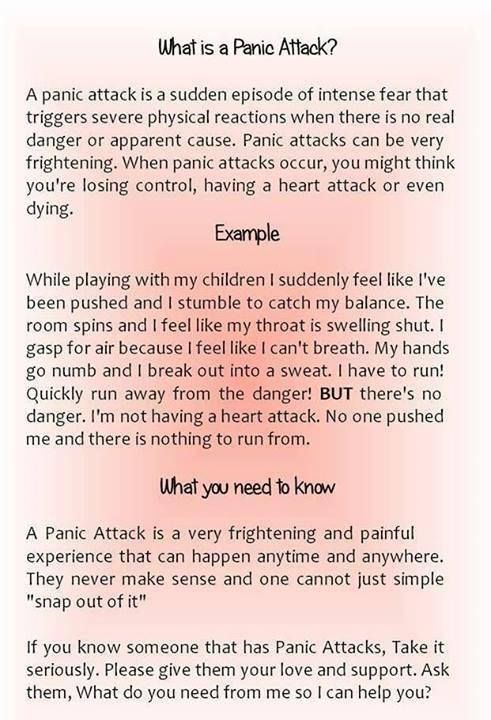 It could be listening to a song you like, watching a favourite show or eating your favourite food.
It could be listening to a song you like, watching a favourite show or eating your favourite food.
2) Have a hot bath
A panic attack can make you feel mentally exhausted and detached from reality. Having a hot bath will relax you and help you focus on the pleasant physical sensation.
3) Go outside
Another way to bring yourself back to the present is going for a walk. Light exercise will have a calming effect and focusing on the world around you will help you distract from anxious thoughts.
4) Reach out to a loved one
Even when a panic attack ends, the anxiety might still linger. Talking through your feelings to a close friend or a family member can help you feel less overwhelmed.
Share this Image On Your Site
</p><br /><br /><br /><br /><br /><br /><br /><br /><br /><br /><br /><br /><br /><br /><br /><br /><br /><br /><br /><br /><br /><br /><br /><br /><br /><br /><br /><br /><br /><br /><br /><br /><br /><br /><br /><br /><br /><br /><br /><br /><br /><br /><br /><br /><br /><br /><br /><br /><br /><br /><br /><br /><br /><br /><br /><br /><br /><br /><br /><br /><br /><br /><br /><br /><br /><br /><br /><br /><br /><br /><br /><br /><br /><br /><br /><br /><br /><br /><br /><br /><br /><br /><br /><br /><br /><br /><br /><br /><br /><br /><br /><br /><br /><br /><br /><br /><br /><br /><br /><br /><br /><br /><br /><br /><br /><br /><br /><br /><br /><br /><br /><br /><br /><br /><br /><br /><br /><br /><br /><br /><br /><br /><br /><br /><br /><br /><br /><br /><br /><br /><br /><br /><br /><br /><br /><br /><br /><br /><br /><br /><br /><br /><br /><br /><br /><br /><br /><br /><br /><br /><br /><br /><br /><br /><br /><br /><br /><br /><br /><br /><br /><br /><br /><br /><br /><br /><br /><p><strong>Please include attribution to https://therapy-central. com with this graphic.</strong></p><br /><br /><br /><br /><br /><br /><br /><br /><br /><br /><br /><br /><br /><br /><br /><br /><br /><br /><br /><br /><br /><br /><br /><br /><br /><br /><br /><br /><br /><br /><br /><br /><br /><br /><br /><br /><br /><br /><br /><br /><br /><br /><br /><br /><br /><br /><br /><br /><br /><br /><br /><br /><br /><br /><br /><br /><br /><br /><br /><br /><br /><br /><br /><br /><br /><br /><br /><br /><br /><br /><br /><br /><br /><br /><br /><br /><br /><br /><br /><br /><br /><br /><br /><br /><br /><br /><br /><br /><br /><br /><br /><br /><br /><br /><br /><br /><br /><br /><br /><br /><br /><br /><br /><br /><br /><br /><br /><br /><br /><br /><br /><br /><br /><br /><br /><br /><br /><br /><br /><br /><br /><br /><br /><br /><br /><br /><br /><br /><br /><br /><br /><br /><br /><br /><br /><br /><br /><br /><br /><br /><br /><br /><br /><br /><br /><br /><br /><br /><br /><br /><br /><br /><br /><br /><br /><br /><br /><br /><br /><br /><br /><br /><br /><br /><br /><br /><br /><p><a href=’ https://therapy-central.
com with this graphic.</strong></p><br /><br /><br /><br /><br /><br /><br /><br /><br /><br /><br /><br /><br /><br /><br /><br /><br /><br /><br /><br /><br /><br /><br /><br /><br /><br /><br /><br /><br /><br /><br /><br /><br /><br /><br /><br /><br /><br /><br /><br /><br /><br /><br /><br /><br /><br /><br /><br /><br /><br /><br /><br /><br /><br /><br /><br /><br /><br /><br /><br /><br /><br /><br /><br /><br /><br /><br /><br /><br /><br /><br /><br /><br /><br /><br /><br /><br /><br /><br /><br /><br /><br /><br /><br /><br /><br /><br /><br /><br /><br /><br /><br /><br /><br /><br /><br /><br /><br /><br /><br /><br /><br /><br /><br /><br /><br /><br /><br /><br /><br /><br /><br /><br /><br /><br /><br /><br /><br /><br /><br /><br /><br /><br /><br /><br /><br /><br /><br /><br /><br /><br /><br /><br /><br /><br /><br /><br /><br /><br /><br /><br /><br /><br /><br /><br /><br /><br /><br /><br /><br /><br /><br /><br /><br /><br /><br /><br /><br /><br /><br /><br /><br /><br /><br /><br /><br /><br /><p><a href=’ https://therapy-central.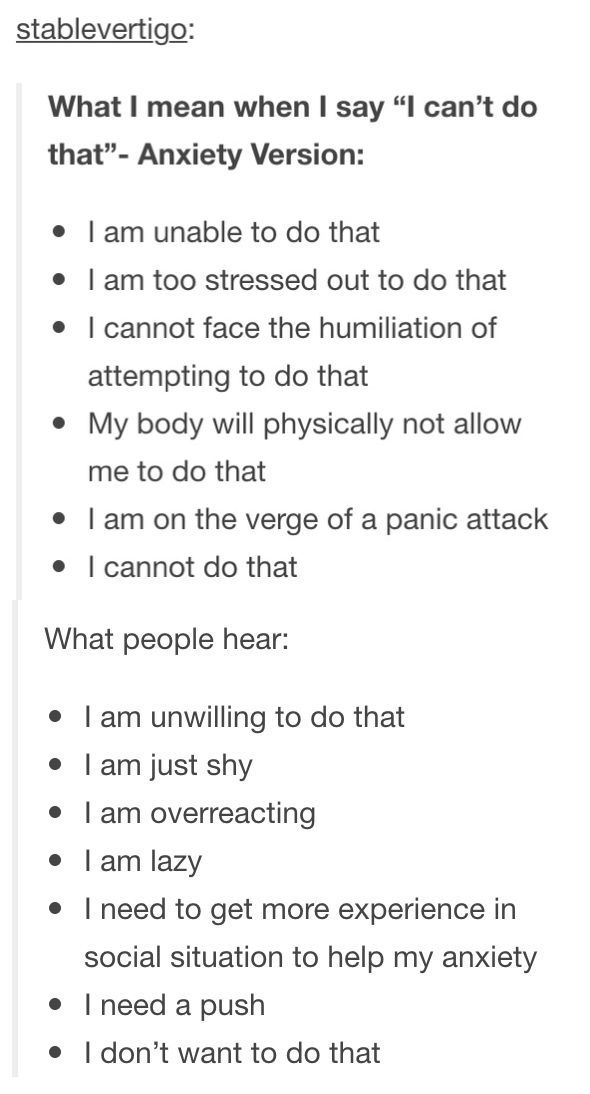 com/2021/10/11/what-to-do-after-a-panic-attack/<span data-mce-type=”bookmark” style=”display: inline-block; width: 0px; overflow: hidden; line-height: 0;” class=”mce_SELRES_start”></span><br /><br /><br /><br /><br /><br /><br /><br /><br /><br /><br /><br /><br /><br /><br /><br /><br /><br /><br /><br /><br /><br /><br /><br /><br /><br /><br /><br /><br /><br /><br /><br /><br /><br /><br /><br /><br /><br /><br /><br /><br /><br /><br /><br /><br /><br /><br /><br /><br /><br /><br /><br /><br /><br /><br /><br /><br /><br /><br /><br /><br /><br /><br /><br /><br /><br /><br /><br /><br /><br /><br /><br /><br /><br /><br /><br /><br /><br /><br /><br /><br /><br /><br />’><img src=’https://therapy-central.
com/2021/10/11/what-to-do-after-a-panic-attack/<span data-mce-type=”bookmark” style=”display: inline-block; width: 0px; overflow: hidden; line-height: 0;” class=”mce_SELRES_start”></span><br /><br /><br /><br /><br /><br /><br /><br /><br /><br /><br /><br /><br /><br /><br /><br /><br /><br /><br /><br /><br /><br /><br /><br /><br /><br /><br /><br /><br /><br /><br /><br /><br /><br /><br /><br /><br /><br /><br /><br /><br /><br /><br /><br /><br /><br /><br /><br /><br /><br /><br /><br /><br /><br /><br /><br /><br /><br /><br /><br /><br /><br /><br /><br /><br /><br /><br /><br /><br /><br /><br /><br /><br /><br /><br /><br /><br /><br /><br /><br /><br /><br /><br />’><img src=’https://therapy-central. com/wp-content/uploads/2021/10/infoghraphic-What-To-Do-After-Panic-Attack-3.png<span data-mce-type=”bookmark” style=”display: inline-block; width: 0px; overflow: hidden; line-height: 0;” class=”mce_SELRES_start”></span><span data-mce-type=”bookmark” style=”display: inline-block; width: 0px; overflow: hidden; line-height: 0;” class=”mce_SELRES_start”></span><span data-mce-type=”bookmark” style=”display: inline-block; width: 0px; overflow: hidden; line-height: 0;” class=”mce_SELRES_start”></span><span data-mce-type=”bookmark” style=”display: inline-block; width: 0px; overflow: hidden; line-height: 0;” class=”mce_SELRES_start”></span>’ alt=” 540px border=’0′ /></a></p><br /><br /><br /><br /><br /><br /><br /><br /><br /><br /><br /><br /><br /><br /><br /><br /><br /><br /><br /><br /><br /><br /><br /><br /><br /><br /><br /><br /><br /><br /><br /><br /><br /><br /><br /><br /><br /><br /><br /><br /><br /><br /><br /><br /><br /><br /><br /><br /><br /><br /><br /><br /><br /><br /><br /><br /><br /><br /><br /><br /><br /><br /><br /><br /><br /><br /><br /><br /><br /><br /><br /><br /><br /><br /><br /><br /><br /><br /><br /><br /><br /><br /><br /><br /><br /><br /><br /><br /><br /><br /><br /><br /><br /><br /><br /><br /><br /><br /><br /><br /><br /><br /><br /><br /><br /><br /><br /><br /><br /><br /><br /><br /><br /><br /><br /><br /><br /><br /><br /><br /><br /><br /><br /><br /><br /><br /><br /><br /><br /><br /><br /><br /><br /><br /><br /><br /><br /><br /><br /><br /><br /><br /><br /><br /><br /><br /><br /><br /><br /><br /><br /><br /><br /><br /><br /><br /><br /><br /><br /><br /><br /><br /><br /><br /><br /><br /><br /><p>
com/wp-content/uploads/2021/10/infoghraphic-What-To-Do-After-Panic-Attack-3.png<span data-mce-type=”bookmark” style=”display: inline-block; width: 0px; overflow: hidden; line-height: 0;” class=”mce_SELRES_start”></span><span data-mce-type=”bookmark” style=”display: inline-block; width: 0px; overflow: hidden; line-height: 0;” class=”mce_SELRES_start”></span><span data-mce-type=”bookmark” style=”display: inline-block; width: 0px; overflow: hidden; line-height: 0;” class=”mce_SELRES_start”></span><span data-mce-type=”bookmark” style=”display: inline-block; width: 0px; overflow: hidden; line-height: 0;” class=”mce_SELRES_start”></span>’ alt=” 540px border=’0′ /></a></p><br /><br /><br /><br /><br /><br /><br /><br /><br /><br /><br /><br /><br /><br /><br /><br /><br /><br /><br /><br /><br /><br /><br /><br /><br /><br /><br /><br /><br /><br /><br /><br /><br /><br /><br /><br /><br /><br /><br /><br /><br /><br /><br /><br /><br /><br /><br /><br /><br /><br /><br /><br /><br /><br /><br /><br /><br /><br /><br /><br /><br /><br /><br /><br /><br /><br /><br /><br /><br /><br /><br /><br /><br /><br /><br /><br /><br /><br /><br /><br /><br /><br /><br /><br /><br /><br /><br /><br /><br /><br /><br /><br /><br /><br /><br /><br /><br /><br /><br /><br /><br /><br /><br /><br /><br /><br /><br /><br /><br /><br /><br /><br /><br /><br /><br /><br /><br /><br /><br /><br /><br /><br /><br /><br /><br /><br /><br /><br /><br /><br /><br /><br /><br /><br /><br /><br /><br /><br /><br /><br /><br /><br /><br /><br /><br /><br /><br /><br /><br /><br /><br /><br /><br /><br /><br /><br /><br /><br /><br /><br /><br /><br /><br /><br /><br /><br /><br /><p>
Dealing With Panic Attacks In The Long-Run
Panic attacks can be a debilitating condition that impairs your daily functioning. However, you don’t have to go through this alone. Apart from following the tips mentioned above, you can consider receiving professional treatment. Read more about Panic Attack Treatment here.
However, you don’t have to go through this alone. Apart from following the tips mentioned above, you can consider receiving professional treatment. Read more about Panic Attack Treatment here.
Contact us for a free 15 min consultation. We’re here to help.
More readings :
Discover more about What is anxiety? How to manage it?
CBT for Anxiety: Survival Guide
Additional resources:
Read more on panic attacks
How to deal with panic attacks
A panic attack is a feeling of sudden and intense anxiety.
Panic attacks can also have physical symptoms, including:
- shaking
- feeling disorientated
- nausea
- rapid, irregular heartbeats
- dry mouth
- breathlessness
- sweating
- dizziness
The symptoms of a panic attack are not dangerous, but can be very frightening.
They can make you feel as though you're having a heart attack, or that you're going to collapse or even die.
Most panic attacks last somewhere from 5 minutes to half an hour.
How to handle a panic attack
Professor Paul Salkovskis, Professor of Clinical Psychology and Applied Science at the University of Bath, says it's important not to let your fear of panic attacks control you.
"Panic attacks always pass and the symptoms are not a sign of anything harmful happening," he says. "Tell yourself that the symptoms you're experiencing are caused by anxiety."
He says don't look for distractions. "Ride out the attack. Try to keep doing things. If possible, it's important to try to remain in the situation until the anxiety has subsided."
"Confront your fear. If you don't run away from it, you're giving yourself a chance to discover that nothing's going to happen."
As the anxiety begins to pass, start to focus on your surroundings and continue to do what you were doing before.
"If you’re having a short, sudden panic attack, it can be helpful to have someone with you, reassuring you that it will pass and the symptoms are nothing to worry about," says Professor Salkovskis.
Breathing exercise for panic attacks
If you’re breathing quickly during a panic attack, doing a breathing exercise can ease your other symptoms. Try this:
- breathe in as slowly, deeply and gently as you can, through your nose
- breathe out slowly, deeply and gently through your mouth
- some people find it helpful to count steadily from 1 to 5 on each in-breath and each out-breath
- close your eyes and focus on your breathing
You should start to feel better in a few minutes. You may feel tired afterwards.
Visit the No Panic website for another breathing exercise to calm panic.
Ways to prevent panic attacks
"You need to try to work out what particular stress you might be under that could make your symptoms worse," says Professor Salkovskis. "It's important not to restrict your movements and daily activities."
Do
- practice breathing exercises every day to help prevent panic attacks and relieve them when they happen
- practice regular exercise, especially aerobic exercise, to help you to manage stress levels, release tension, improve your mood and boost confidence
- eat regular meals to stabilise your blood sugar levels
- avoid caffeine, alcohol and smoking – these can make panic attacks worse
- try a panic support groups to get useful advice about how to manage your attacks – your GP can put you in touch with groups in your area
- try cognitive behavioural therapy (CBT) to identify and change the negative thought patterns that are feeding your panic attacks
Is it panic disorder?
If you feel constantly stressed and anxious, particularly about when your next panic attack may be, you may have panic disorder.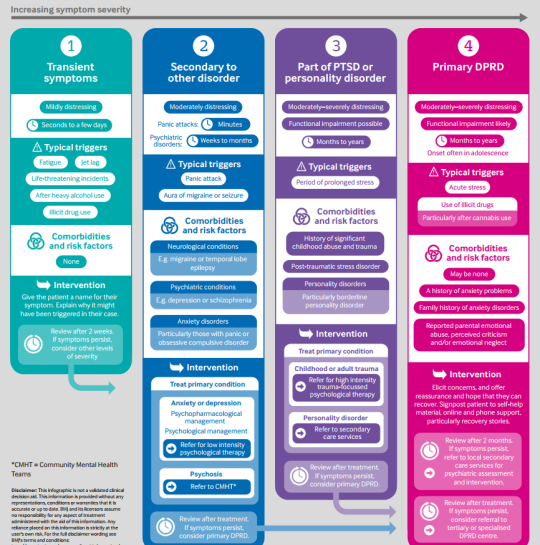
People with panic disorder may avoid situations that might cause a panic attack. They may also fear and avoid public spaces (agoraphobia).
"There's no quick fix, but if your attacks are happening time after time, seek medical help," says Professor Salkovskis.
Read more about panic attacks, including personal stories, at See Me Scotland
Source: Health Scotland - Opens in new browser window
Last updated:
05 January 2023
How can we improve this page?
Help us improve NHS inform
Don’t include personal information e.g. name, location or any personal health conditions.
Email Address e.g. [email protected]
Message Maximum of 500 characters
Community content from Health Unlocked - This will open in a new window.
Search for anxiety and panic services
Enter a place or postcodeWhat to do with a panic attack?
. Psychologist's adviceUpdated October 27, 2022, 13:24
Shutterstock
Fear, fright and anxiety are evolutionarily necessary for a person to survive. However, sometimes high anxiety can provoke panic disorder, in which there are repeated bouts of severe anxiety - panic. If attacks occur frequently, the quality of life is rapidly reduced, so it is important to learn how to cope with them.
RBC Life, together with experts, understands how you can help yourself and your loved ones when faced with this destructive state.
Contents
- What is it
- Symptoms
- Causes
- What to do
- How to help the person
What is a panic attack
Pexels
A panic attack is a sudden attack of anxiety, an acute fright, which is accompanied by a deterioration in well-being, unpleasant sensations in the body and autonomic disorders - rapid breathing, tachycardia, sweating, weakness, decreased pressure, tremor or a feeling of suffocation, lasting, as a rule, from 5 to 30 minutes.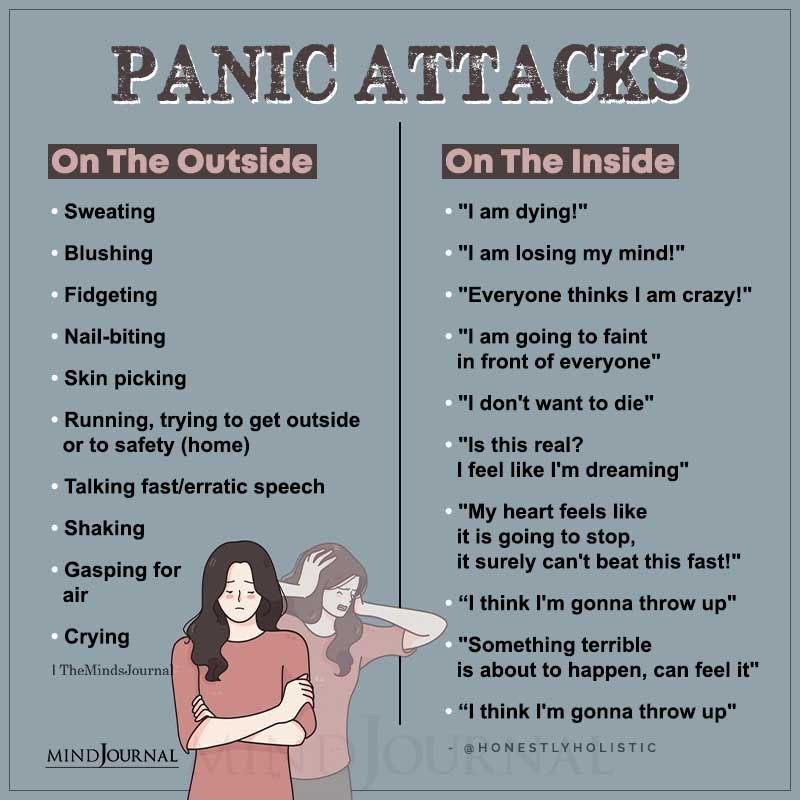
Usually a person is afraid of such a condition and perceives the symptoms as a manifestation of a heart attack or stroke. In this case, an uncontrollable fear of death may appear.
“A panic attack is not a diagnosable disease, but a symptom that may indicate that a person has an anxiety disorder, emotional exhaustion, or chronic stress. At its core, this is not a disease, it is a misinterpretation of the condition. And this condition arises due to chronic emotional overstrain,” explains Alexey Krasikov, founder of the School of Emotional Intelligence and Psychotherapy, consultant psychologist in the field of anxiety disorders and the development of stress resistance.
Psychologist Andrei Chernyshev tells how important it is to distinguish a panic attack from an attack of fear. In the first case, the episode will be limited in time: the attack usually lasts 15–20 minutes. This is due to the release of hormones - adrenaline, norepinephrine, cortisol.
Panic attacks are the result of destructive thoughts that a person constantly scrolls in his head. Concentrating on these scripts can cause impotence, headaches, or nausea. In addition, panic attacks can cause immediate harm to health, as attacks occur suddenly, sometimes while driving or in a dream, the expert notes.
Concentrating on these scripts can cause impotence, headaches, or nausea. In addition, panic attacks can cause immediate harm to health, as attacks occur suddenly, sometimes while driving or in a dream, the expert notes.
Panic attacks are a manifestation of phobias or anxiety-depressive disorders, says Sergey Pozdnyakov, head of the Center for Psychological Correction of Diseases at Medsi Group. Previously, panic attacks were diagnosed mainly in women aged 20–45, but today they appear in children of seven–eight years, as well as in people aged 70+. The increase in the number of disorders is influenced by the accelerating rhythm of life and the increase in the information flow, which constantly affects the nervous system. According to WHO, 30% of the world's population has experienced a panic attack at least once in their lives.
Panic attack symptoms
Shutterstock
As Aleksey Krasikov notes, a panic attack is often confused with a heart attack. But there are a number of nuances.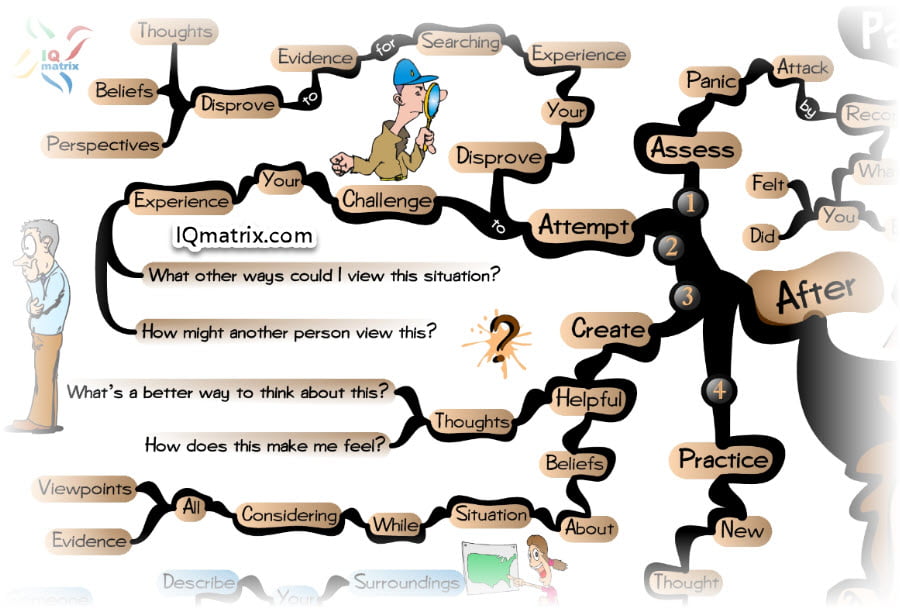 For example, pain in angina pectoris is described as a “burning sensation in the chest”, and during a vegetative crisis, they may not be at all. Patients report feelings of anxiety, a feeling that the heart is not working “correctly”, but do not experience symptoms of angina pectoris. A panic attack is an emotional, not a physiological, disorder, so sedatives help to correct the situation. Drugs that stop cardiac symptoms are useless in this case, the psychologist adds.
For example, pain in angina pectoris is described as a “burning sensation in the chest”, and during a vegetative crisis, they may not be at all. Patients report feelings of anxiety, a feeling that the heart is not working “correctly”, but do not experience symptoms of angina pectoris. A panic attack is an emotional, not a physiological, disorder, so sedatives help to correct the situation. Drugs that stop cardiac symptoms are useless in this case, the psychologist adds.
Anastasia AfanasyevaPsychiatrist, psychotherapist, clinical director of the psychological platform Alter
“Panic attacks manifest through physical and mental symptoms. You can understand that this is a panic attack if there are at least two physical signs and at least one of the mental ones.
Physical symptoms of a panic attack may include:
- shortness of breath, feeling short of breath;
- rapid pulse (up to 130-170 beats per minute) and strong heartbeat;
- pain or discomfort in the region of the heart;
- dizziness, lightness in head;
- loss of stability or pre-syncope;
- flushes of heat or coldness in the body, chills;
- nausea;
- excessive sweating;
- tremors in the muscles;
- numbness or tingling in the extremities.
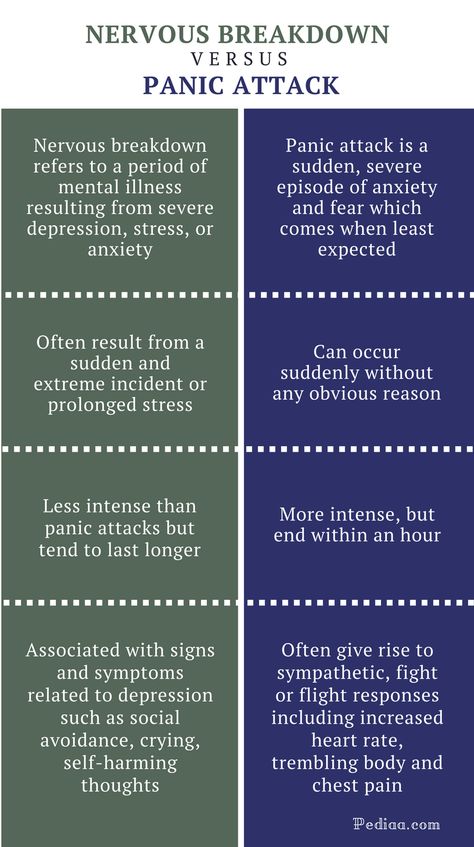
The following manifestations are considered to be mental signs of a panic attack:
- fear of going crazy or losing control over oneself;
- fear of death;
- depersonalization and / or derealization - loss of connection with reality, a violation of an adequate perception of oneself and / or the surrounding space, a feeling that you are “not yourself” or the world around has become different, ghostly, unreal.
Causes of panic attacks
Shutterstock
Aleksey Krasikov notes that the main cause of a panic attack is fear. A person experiences unusual experiences and misinterprets them - believes in a catastrophe or feels the proximity of death. In this case, the balance between the sympathetic and parasympathetic nervous systems shifts towards the first. In fact, a panic attack is an instinct of a person who scared himself.
A person does not have a predisposition to panic attacks, a study by the US National Institute of Mental Health has proven [1].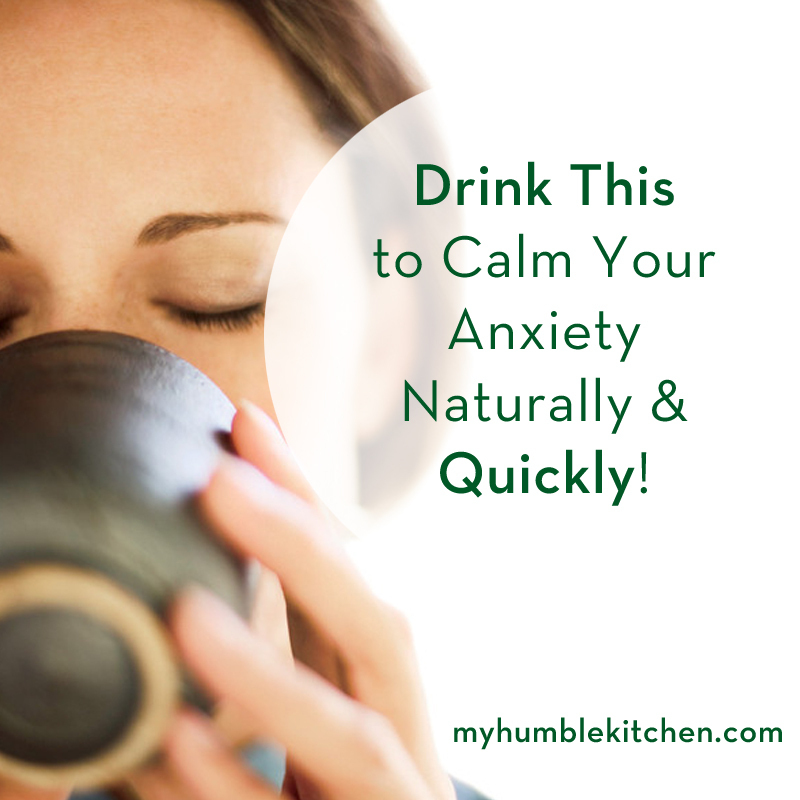 Their main cause is a general anxiety condition caused by various circumstances.
Their main cause is a general anxiety condition caused by various circumstances.
Among the risk factors for the development of panic attacks [2]:
- stress associated with illness or death of loved ones;
- traumatic event in the past: violence, accident, emergency;
- changes in life: change of residence, job, divorce, birth of a child;
- unresolved childhood injuries;
- smoking and excessive caffeine intake;
- phobias, depression, obsessive-compulsive disorders.
Anastasia Afanasyeva:
“A panic attack is an excessive reaction of the body to a stimulus that our brain regards as a danger to life. That is why one of the characteristic signs of a panic attack is the fear of dying or not getting help.
How does a panic attack occur?
The brain receives a signal that it labels as a threat to our existence, and begins to secrete norepinephrine, which, in turn, stimulates the adrenal glands to produce stress hormones - adrenaline and cortisol.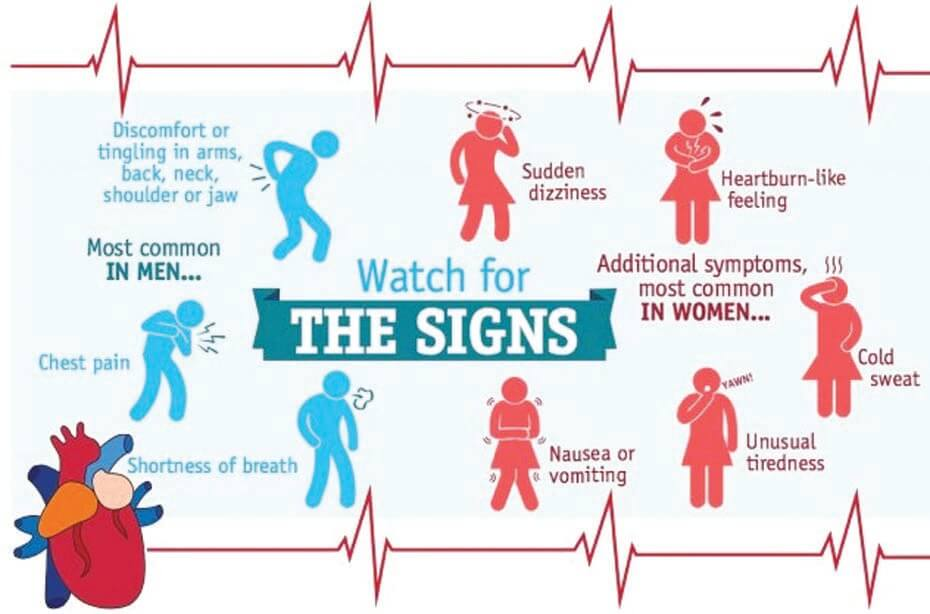
When adrenaline enters the bloodstream, it triggers automatic survival responses: fight, run or freeze.
In order for the body to perform these actions, adrenaline acts on various body systems, making them work faster and more intensively. For example, in order to strike or run away, our muscles must actively contract, for this they need energy, which is taken from oxygen and glucose in the blood. Therefore, the lungs begin to breathe faster, and the heart begins to beat harder to pump blood faster.
These are the physical signs we see in a panic attack.”
How to deal with a panic attack
Unsplash
If you suspect that you have an anxiety disorder, psychologist Alexei Krasikov advises you to see a doctor. It is necessary to conduct an examination of the body: get advice from a cardiologist and a neurologist, evaluate clinical blood indices, hormone levels, and do an ultrasound scan. If health problems are identified at this stage, the patient will be referred to a specialized specialist for the selection of therapy.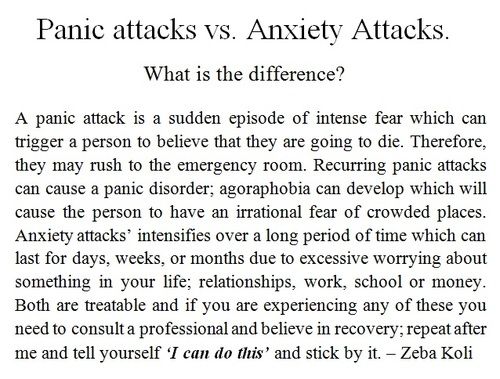
If no diseases are detected, psychotherapists and psychologists are involved. They will teach you how to respond appropriately to life's circumstances.
Such therapy includes:
- informing about the causes and mechanism of panic;
- formation of the skill of correct interpretation of the state;
- exclusion of avoidant behavior, leveling of fears;
- study of the anamnesis and causes that provoked the crisis;
- Reconstruction of the system of relations, training in rational response.
According to the psychologist, sedatives are required only at the beginning of therapy or in especially severe cases. Duration of admission depends on the specific case and usually takes from several months to a year.
Panic Attack Self Help
Pexels
Here are some tips from psychologist Aleksey Krasikov on how to deal with an attack on your own:
- Realize that it was just an adrenaline rush during the fright.
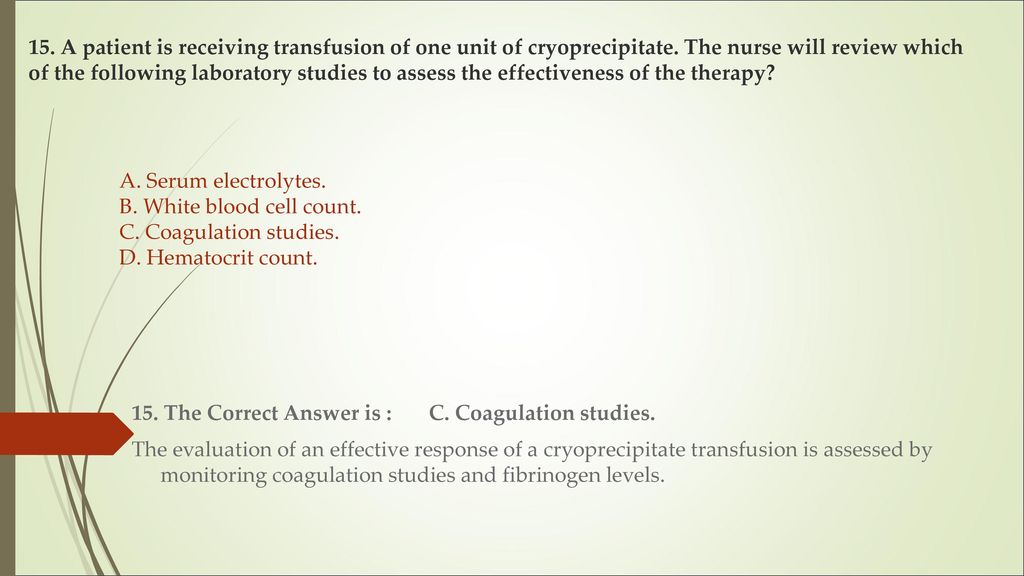 This in itself is completely safe.
This in itself is completely safe. - Remember the main rule: "The more I resist, the harder it will be for me." No need to do anything, no matter how strange it may sound: no running, no fussing. Breathe deeply and evenly.
- Try to let the stress and fear go through you.
- During a panic attack, a person concentrates on his body, closes and thus only stimulates panic. Therefore, it is important to switch to something else. You can divert attention to the pain sensation, for example, pinching your earlobe or other part of the body.
- You can resort to breathing into a paper or plastic bag, through a folded handkerchief or scarf, to reduce the level of oxygen in the blood, which helps to calm down.
- Call someone. Talking on the phone can be a very good distraction from the current state.
Andrey Chernyshev says that the fear that causes panic is accompanied by tunnel thinking. In this case, a person cannot be distracted from experiences.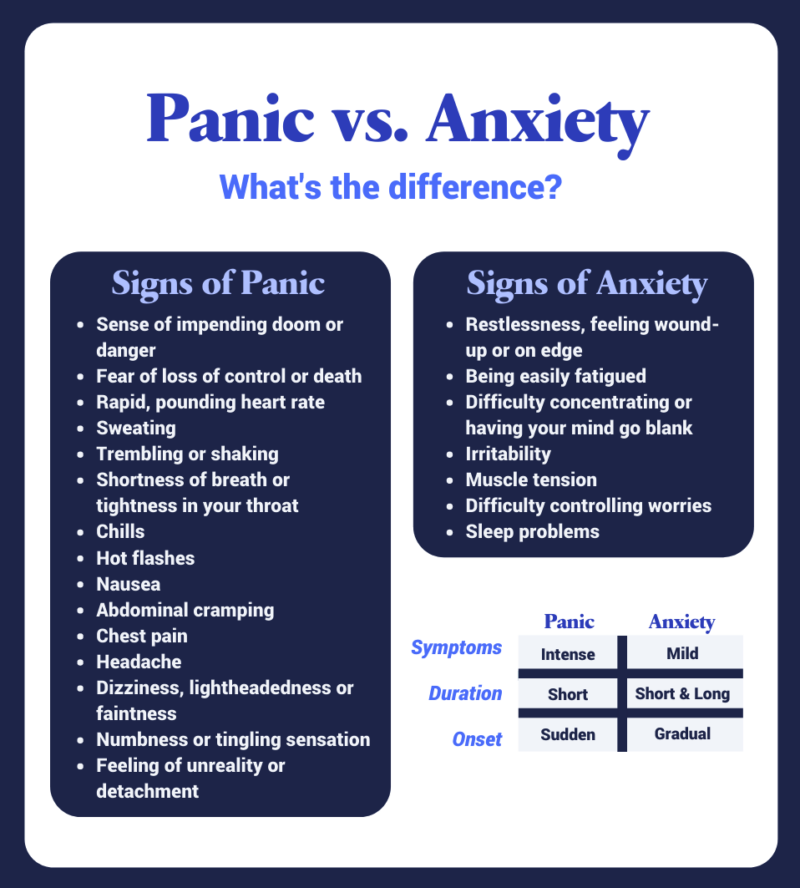 It's like blinders that are put on horses to keep them looking straight ahead. A person who has succumbed to panic also perceives information. Therefore, in order to stop an attack, it is important to stop and think in time. It is difficult to do this at the moment of panic, but you can think over the tactics of behavior while in a calm state. The psychologist advises to remember people, events or things that give a sense of security. Or set a reminder on your phone and write anything that will help you feel better.
It's like blinders that are put on horses to keep them looking straight ahead. A person who has succumbed to panic also perceives information. Therefore, in order to stop an attack, it is important to stop and think in time. It is difficult to do this at the moment of panic, but you can think over the tactics of behavior while in a calm state. The psychologist advises to remember people, events or things that give a sense of security. Or set a reminder on your phone and write anything that will help you feel better.
Anastasia Afanasyeva:
“It is paradoxical as it may seem, the key rule for coping with a panic attack is not to react to it in any way. In fact, this is biologically justified: when adrenaline rages in the body and causes all those signs of a panic attack that we talked about, a person perceives these symptoms as a sign that something terrible will happen to him now, and begins to worry even more. So we find ourselves in a vicious circle: adrenaline is released again in the body, and all sensations are intensified.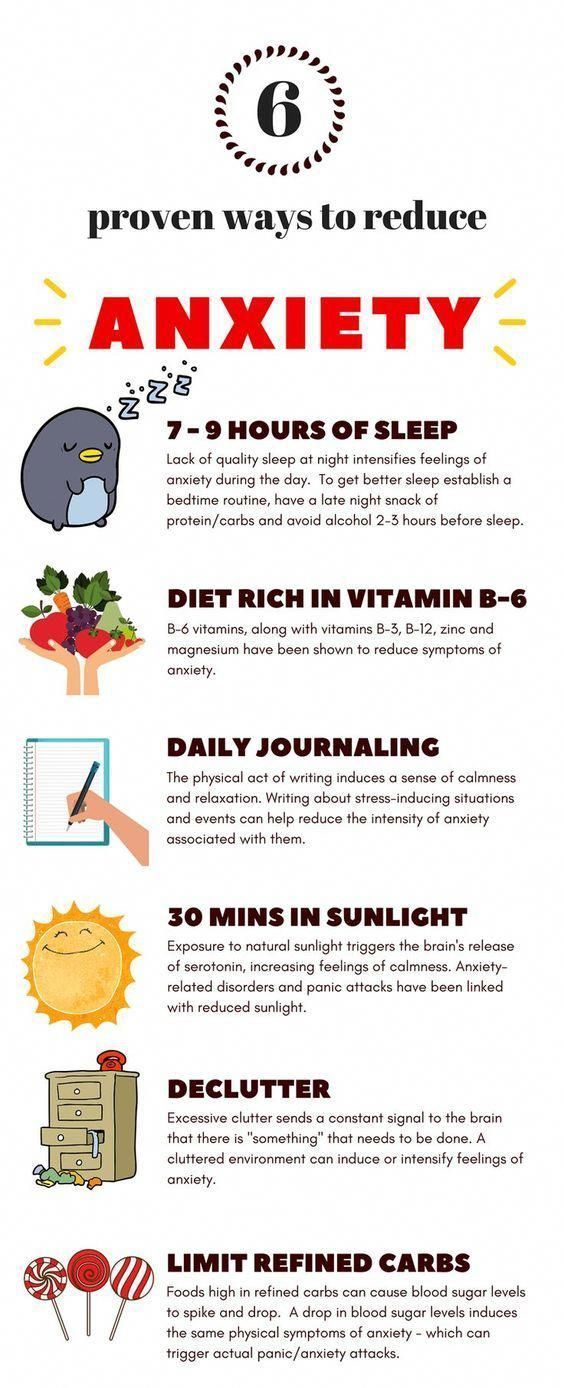
If we realize that there is no direct threat to our life and that our brain is just "playing it safe", then the panic will go away in just a few minutes.
Therefore, at the moment of great stress, it is important to remember that this is only an adrenaline rush and nothing threatens us physically. This reaction will quickly end if we stop feeding it. Try to imagine that this feeling of anxiety is like a wave that rolls in and gradually fades.
It also helps at times like this to just keep doing what you were doing, like walking down the street.
Breathing practices are very helpful. They activate the parasympathetic system, which creates a sense of security.
- You can focus on your breathing by consciously observing the inhalation and exhalation, feeling how cold air passes through the respiratory tract and comes back already warm.
- Another good exercise is "4-7-8": four counts - slow breath in, seven counts - breath holding and eight counts - long calm exhalation.
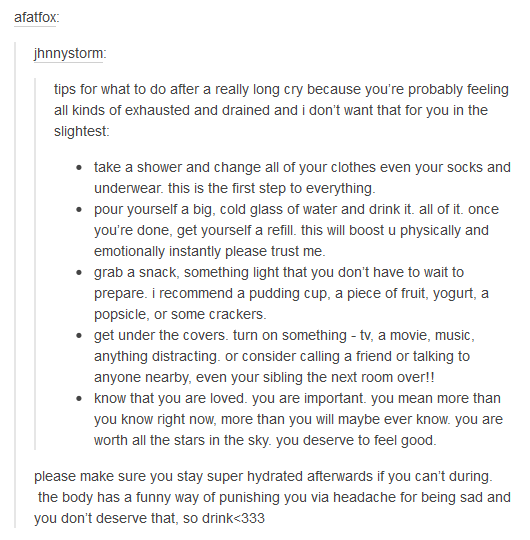
Physical activity is also important, especially outdoors. Walk, run, jump, dance - movement helps to work off excess adrenaline and complete the cycle of stress response.
Finally, look to others for support. If there is someone around to talk to, or better yet, hug, don't hesitate to ask for it.
What you definitely shouldn't do is eat up panic or fight it with alcohol or other substances. This may provide temporary relief, but in the end it will only aggravate your condition and lead to other unpleasant consequences. The best way to deal with anxiety is to allow yourself to experience those emotions and reactions rather than trying to dull them.
If you have panic attacks on a regular basis and you feel that you cannot cope with them on your own, do not hesitate, contact a psychotherapist.
How to help a person with a panic attack
Pexels
Anastasia Afanasyeva:
“If we see that someone has a panic attack, the main thing we can do is help the person survive it. Explain what is happening to him. You can tell him: “I know that you are scared right now and that you may feel that something bad can happen to you. But it's just a very strong anxiety. Your body has released an incredible amount of stress hormones like adrenaline, and because of that, you have a lot of sensations in your body. I am close to you. It will soon pass. Let's just stay together, breathe."
Panic attacks usually do not last more than 10-15 minutes. Therefore, it is important to be with this person, sit next to him, you can give him water, offer to breathe together and wait until the panic passes. This is the most efficient way."
Share
Materials to Article
Authors
Tags
Irina Vorobyova
You may interest you
90,000 reasons, symptoms, preventing and treatment of SUN DRIVE, FORWARE WARRISE, ANYTHING AND FEENTS, which is about to be about-READY and that's it, certain death. Thirty years ago, this disease was not taken too seriously and was considered far-fetched. And now the incidence of panic attacks is growing exponentially every year. Let's talk about how you can deal with them.
Tags:
age
Diseases
Women Health
Doctor's advice
Psychological problems
A panic attack is a sudden attack of anxiety, a terrible fear that can end in a real tantrum.
It usually starts at moments of stress for the body. For example, when you ride the subway in the heat or find yourself in a stuffy crowd. Most often, it can be found in large cities, and it overcomes people with increased anxiety, as a rule, perfectionists. Alas, in most cases, panic attacks occur in young women between the ages of 20 and 30 years.
We talked to the doctor and found out the main points regarding this mysterious disease. What are panic attacks from a medical point of view, how to respond to an attack and how you can prevent their recurrence in the future.
How to understand that a panic attack has happened to you
Dmitry Solovyov
general practitioner, editor of the-challenger.ru portal
If we are talking about an illness, the duration of an attack can be from 5 to 30 minutes. Often girls ask specialists if a panic attack can last several hours. Unfortunately, yes, in rare cases it lasts up to several days. Just not every excitement that we experience for loved ones, before an important exam or report, is considered a panic. You will be able to distinguish an attack by a number of features and the nature of manifestations.
ADVERTISING - CONTINUED BELOW
Panic attack symptoms
As the name implies, the main symptom of a panic attack in women is a sudden and seemingly unexplained attack of anxiety and fear. It is accompanied by unpleasant sensations: palpitations, a rush of cold sweat, trembling in the legs, chest pain, difficulty breathing, and so on. Symptoms can be very different, the main thing is that they should disappear without a trace in 5-20 minutes, along with a feeling of fear. But this is not always the case.
Diagnosis of a panic attack cannot be made on the basis of symptoms alone: one must make sure that the symptoms are not caused by some other disease (for example, heart disease). The fact is that a panic attack in itself usually does not cause any harm. The symptoms and signs of a panic attack in women are extremely unpleasant, but pass quite quickly.
The main trouble is the fear that the attack will happen again. For example, after a panic attack on the subway, it can be very difficult for a person to go down to the subway again. This becomes a real problem. Such fear can be “self-fulfilling”: a person experiences stress, and under the influence of stress, a panic attack develops again. In severe cases, agoraphobia can form - a condition where almost any interaction with society causes bouts of fear and discomfort, and a person is forced to spend his life locked up.
What is a panic attack from the point of view of physiology
Consider, from the point of view of physiology, how a panic attack manifests itself. This is an unreasonably sharp response of the nervous system to an external stimulus, which in reality is not dangerous at all. All of her symptoms are part of the fight-or-flight defense mechanism that kicks in, say, when she encounters a bear in the woods. In these cases, indeed, there is reason for fear, and a frequent heartbeat makes it possible to run faster. However, for a reason that is not entirely clear, this mechanism sometimes works "without a bear", that is, for no apparent reason.
Panic attacks have similar symptoms to vegetative-vascular dystonia (VVD), and treatment will also be identical. The latter is a disorder of the autonomic nervous system, which is described only in the domestic literature. Abroad, such a diagnosis is not widely used: it does not say anything about the cause of the disease, characterizing only its mechanism.
If you read the comments of experts on the forums, there is no fundamental difference between VVD and panic attacks. Panic reflects an acute attack of VVD, or an attack becomes the most striking symptom of dystonia, so an equal sign is often put between them.
Causes of panic attacks
In order to start a certain mechanism in the body, some kind of danger must arise (imaginary, exaggerated by our perception), and the reaction to it will result in a panic attack. Adrenaline is released and the sympathetic nervous system is activated. Blood rushes to the internal organs, blood pressure rises, causing a feeling of suffocation.
This is how panic attacks manifest themselves after the coronavirus. As a result of the infection, there is a lack of oxygen in the body, damage to the vessels of the pulmonary circulation is often observed. Therefore, any increased load is accompanied by a lack of oxygen.
As a rule, the causes that lead to panic attacks are physical or mental uncomfortable conditions. This may be excessive stress during training, overwork at work, alcohol abuse. Often, severe conflict situations and chronic stress lead to seizures. When anxiety increases, panic attacks and bodily manifestations also increase. The heart beats strongly, it seems that the whole world is collapsing and this only makes it worse.
Constant or periodic neurosis and panic attacks make a person's life unbearable. In this state, it is difficult to work and coexist calmly with loved ones. The more a person is afraid to go out into the street, the less he experiences positive emotions, focusing on his own fears. If there were examples of this disease in the family, one should be especially attentive to attacks and not ignore them.
What to do if a panic attack has begun
At the moment when an attack occurs, there is no way to analyze the causes and reason rationally. But there are several ways that will tell you what to do with a panic attack.
- Take a few breaths into any container. It can be a plastic cup or even a bag - just calmly breathe into it. So you can quickly stabilize your breathing and cope with panic.
- Switch your attention to something external. For example, count the columns at a subway station or the buttons on a passer-by's jacket. Any concentration on foreign objects will help you both come to your senses and again feel connected to reality and cope with a panic attack.
- Stay where you are, or better yet, sit down. During a panic attack, try to limit your movements, if possible, sit down and, as it were, “freeze”. This method, like the previous one, helps to focus on the world around you, and not on your unpleasant sensations.
- Talk to someone. Yes, it may seem strange at first glance, but a random passer-by, to whom you turn for help, is able to help you simply by his attention. Communication with another person will give a feeling of security and distract from a panic attack.
5 Tips for Preventing Panic Attacks
Unfortunately, medicine does not know exactly why panic attacks occur. Therefore, advice on how to deal with panic attacks is more about lifestyle. Some moments you can change and control. Use the general recommendations, and they will help you avoid seizures in the future.
- Do not lead a sedentary lifestyle. There is a scientific assumption that the occurrence of panic attacks is associated with a lack of endorphins that our body produces during physical exertion. Therefore, even light aerobic training and walking can make your life much easier.
- Try not to be nervous. Yes, we know this recommendation sounds ridiculous. How can you do without stress when life is so difficult, and panic attacks are ready to appear on every occasion. But calmness and only calmness will save you from attacks and other ailments.
- Do not drink coffee or cut down on it. Caffeine in large quantities causes a rapid heartbeat and can provoke a panic attack at the most unexpected moment.
- Be careful with alcohol. According to experts, alcoholic beverages are the strongest pathogens that can cause unexpected body reactions and panic attacks. Do not get carried away with them and try to avoid strong drinks.
- Be careful with medicines. Analyze if the panic attack is related to taking a new drug? Sometimes a panic attack can be triggered by drugs, so let the doctor analyze the situation.
How to treat panic attacks
We have already found out that a one-time attack is not particularly dangerous, but sometimes the fear of its repetition leads you into a vicious circle. If panic attacks began to happen often and you can no longer cope with it on your own, it is better to consult a doctor. Until the consequences become too severe.
In cases where a persistent panic disorder develops, special breathing techniques, psychotherapy and antidepressants are used. Of course, all this happens under the supervision of a specialist who knows better how to get rid of panic attacks.
